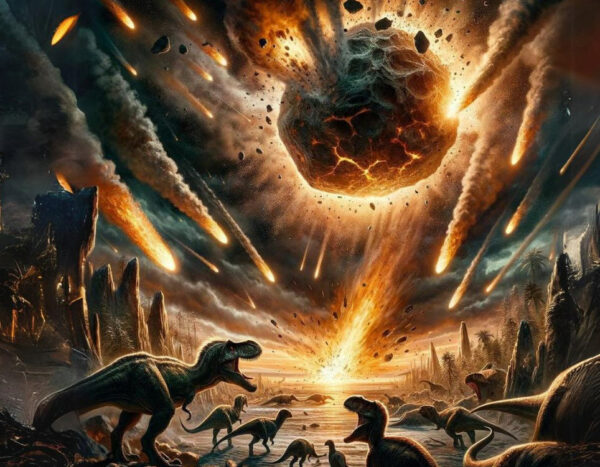The Extinction of Dinosaurs: Unraveling the Mystery
The extinction of dinosaurs, marking the end of the Cretaceous Period around 66 million years ago, remains one of the most fascinating subjects in paleontology and earth sciences. This catastrophic event not only wiped out nearly 75% of Earth’s species but also paved the way for mammals, and subsequently humans, to become the dominant life forms on our planet. The reasons behind this mass extinction have been debated for decades, with theories ranging from asteroid impacts to volcanic eruptions and climate changes. Here, we delve into the latest research and theories to provide insights into this ancient mystery.
The Leading Theories
Q: What evidence supports the asteroid impact theory for the dinosaurs’ extinction?
A: The asteroid impact theory, one of the most widely accepted explanations for the dinosaurs’ extinction, is supported by several key pieces of evidence. The most compelling is the discovery of the Chicxulub crater beneath the Yucatán Peninsula in Mexico, which dates back to approximately 66 million years ago, coinciding with the Cretaceous-Paleogene (K-Pg) boundary. Additionally, worldwide sedimentary deposits from the same period contain a high concentration of iridium, a rare element on Earth’s crust but common in asteroids. These findings, combined with shocked quartz and spherules found in boundary layers around the world, paint a picture of a catastrophic impact event that would have triggered massive tsunamis, wildfires, and a “nuclear winter” effect, drastically altering the planet’s climate.
Q: Were there other contributing factors to the dinosaurs’ extinction?
A: While the asteroid impact is considered a primary cause, it likely wasn’t the sole factor. Geological evidence suggests that the Deccan Traps, vast volcanic formations in present-day India, were experiencing significant eruptions around the same time. These volcanic activities would have released large amounts of sulfur dioxide and carbon dioxide into the atmosphere, contributing to a longer-term change in climate, including cooling and acidification of the oceans. This suggests that the dinosaurs were already under stress from environmental changes before the asteroid struck, possibly weakening ecosystems and making them more vulnerable to collapse.
The Impact on Earth’s Ecosystems
Q: How did the asteroid impact and subsequent environmental changes affect Earth’s ecosystems?
A: The immediate aftermath of the asteroid impact would have been a drastic reduction in sunlight reaching the Earth’s surface, due to the dust, ash, and aerosols ejected into the atmosphere. This “impact winter” would have significantly disrupted photosynthesis, leading to the collapse of plant-based ecosystems and the herbivores that depended on them, followed by the predators at the top of the food chain. The longer-term effects included significant cooling of the Earth’s climate and acidification of the oceans, further stressing marine and terrestrial ecosystems. This chain of events resulted in the mass extinction of not only dinosaurs but also many marine reptiles, ammonites, and other species.
The Rise of Mammals
Q: How did the extinction of dinosaurs lead to the rise of mammals?
A: The extinction of dinosaurs removed the most dominant terrestrial predators and herbivores, opening ecological niches that mammals quickly exploited. In the absence of dinosaurs, mammals, which had existed in relatively small and inconspicuous forms during the Mesozoic era, began to diversify rapidly. This diversification allowed mammals to evolve into a wide range of ecological roles previously occupied by dinosaurs, leading to the emergence of the large and varied mammalian species, including primates, that we see today. The extinction event thus set the stage for mammals, and eventually humans, to become the dominant life forms on Earth.
Conclusion
The extinction of dinosaurs is a testament to the dynamic and sometimes volatile nature of Earth’s history. It serves as a reminder of the impact cosmic and geological events can have on life on our planet. By studying this mass extinction, scientists can gain insights into the resilience of life and the factors that can threaten it, knowledge that is increasingly relevant in today’s changing world.



